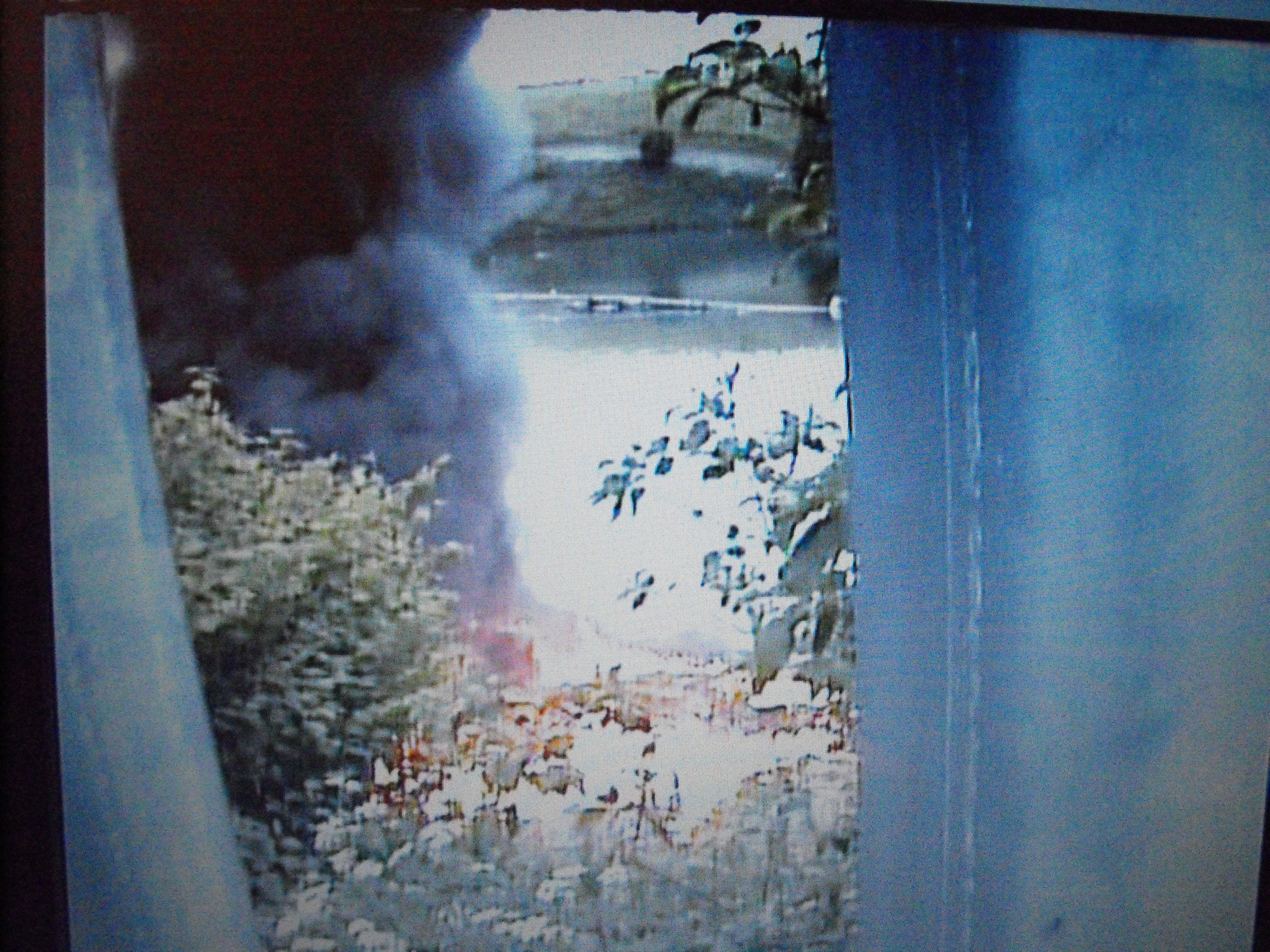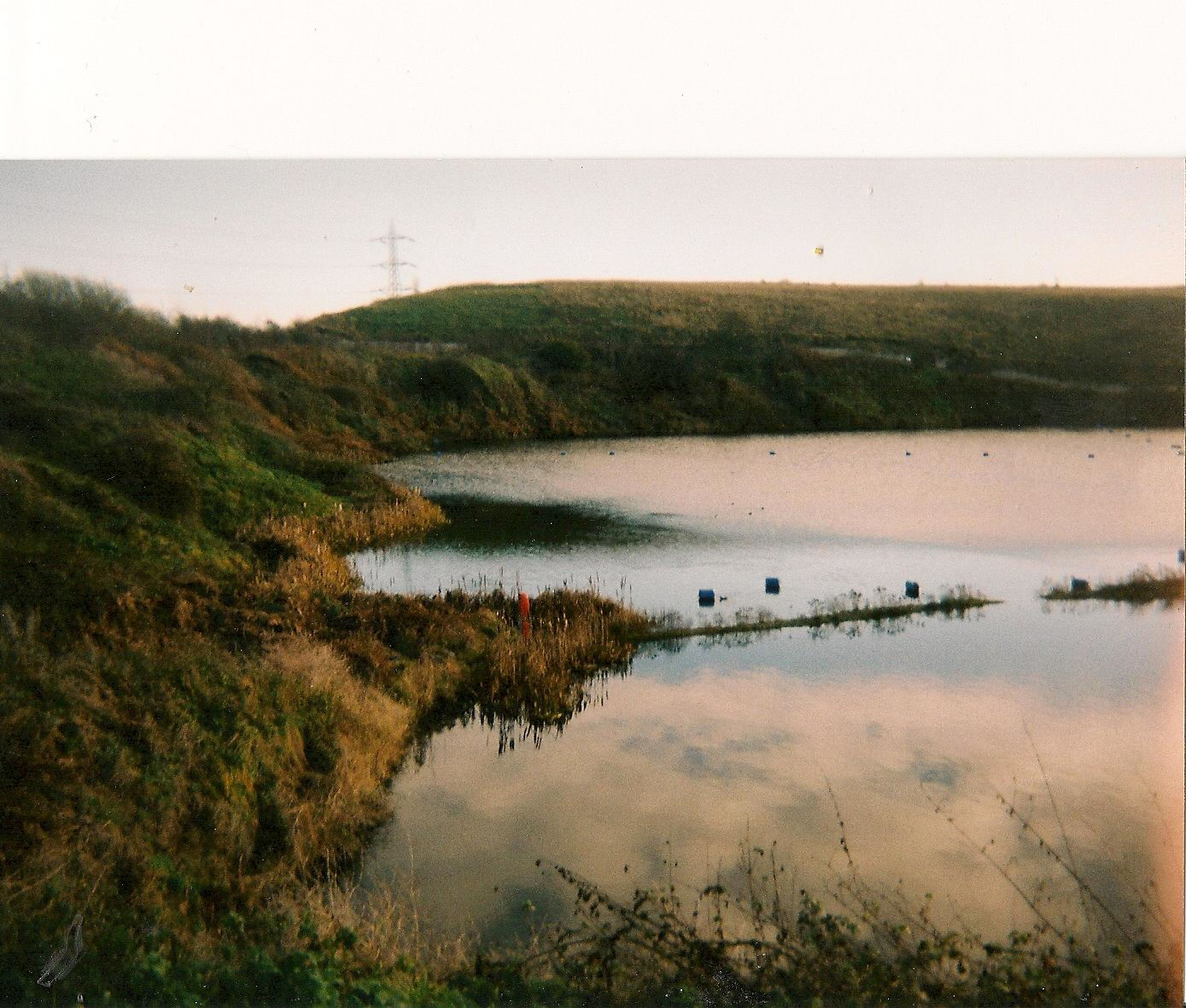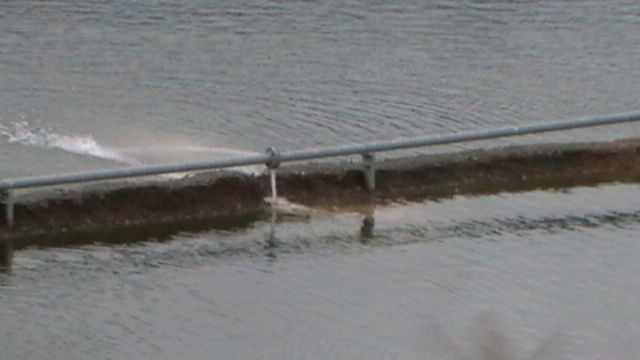
Evidence of numerous anecdotal, pictorial and self disclosed breaches of this licence throughout the period of issue are not difficult to find. We have noted several breaches of the SL31 licence over the years of our involvement with the site from 1997, SOME WHEN THE WASTE WAS STILL BEING TIPPED. Though the waste tipping may have stopped, the licence SL31 (WMR 40803) is still in place until such time as Rhodia can demonstrate that the site is no longer a threat. This is certainly not currently the case. Licence breaches continue to take place.
SITE SECURITY
- Very often members of the public were able to walk into the site unchallenged with the gates wide open, whilst the tanker drivers were pumping waste. Condition 7 and 17 breach
- There were occasions where some tanker drivers left both the main gates and barrier gate at John’s Lane wide open between delivering waste, thereby leaving the site unsupervised and unsecured. On one occasion I saw youths enter the site on a motorbike where they performed stunts on the service road and causeway path between the pools. Condition 7 and 17 breach.
- Drivers themselves constantly complained to me that they were given poor equipment (a pair of gloves) and life buoys were missing on the pool. Lighting on the site was also non-existent. Condition 7 breach.
- Broken fence panels were a common site, as evidenced by the Environment Agency site reports. Below is a picture of broken panels from 2006 allowing anyone access to the site.
“BOTTLE DIGGERS” AND NIGHTHAWKING
There have been several foolish individuals who have been seen digging for bottles on the North Embankment and also using metal detectors in the area. It is unclear whether they are looking specifically for SIP grenade bottles, or others that may have been unofficially tipped on the site. NB This site was never licensed to receive co-disposal municipal waste- nor is there any record of this site being used for this purpose- so why are there so many on the site?
1/4/09 Father and son shovelling earth from the “heavily contaminated” North embankment, just a few feet from water in the deepest part of Rattlechain lagoon. The site was locked yet they had still managed to gain access. I observed them walking from the top of the North embankment to its bottom. Large amounts of soil were moved with a spade as they moved up the bank near to the waters edge.
“At the top of the failed section, a number of small hollows have been excavated by “bottle pickers”, which could contribute to instability.”
– The Cremer and Warner report 1990- indicating that Albright and Wilson/Rhodia knew then that this problem existed, yet 20 years on they had still done nothing about it.
FIRES
On 2/4/09 barrels which Rhodia had put on the pool as a “bird deterrence “ exercise on ropes started to be removed by them. They were retrieved and stored on the Southern embankment, and totalled over 50.
On 25/5/09 on a very hot bank holiday Monday they inexplicably caught fire needing the attendance of West Midlands Fire service. I was alerted to the fire by a concerned resident whose house overlooks the pool. I believe that traces of white phosphorus on the barrels had dried out setting them on fire, given the length of time they had been left to dry out and the connection with the high temperature, though Rhodia tried to blame it on children starting a “grass fire.” There is no evidence of arson as the barrels were a good distance from the fence (see above picture), and how could anyone get into this “secure site” in the first place?
The fire service had difficulty entering the site, with Rhodia’s own fire brigade arriving with their own fire tender after being alerted to the problem by swanwatch. It is interesting that they extinguished the fire using powder, the recommended method for tackling phosphorus fire.
CAUSEWAY PATH FLOODING
Despite their claims of more frequent site inspections, and the fact that cctv had been added to the site in 2010, in June 2012 the causeway path is once again flooded. There can be no excuses for this breach.
NO SITE ID/HAZARDOUS WASTE BOARDS
For several months (coinciding with when houses were being marketed on the adjoining sewage works development site at Callaghan and Wilson Drives), the Hazardous waste sign on the front gate was conspicuously missing, along with contact details of the site operator, breach of conditions 23 and 31. This was either engineered in the interests of the developers or an unacceptable breach of the licence by Rhodia. How could potential house buyers seek to make enquiries about an area which they would not have known contained “hazardous waste”?
It is also correct to point out that Rhodia are not fully compliant with condition 23 and have not been for several years.
“SITE ID BOARD” DOES NOT GIVE THE NAME OF THE SITE, THE ADDRESS OF THE OPERATOR OR OF THE ENVIRONMENT AGENCY REPONSIBLE FOR ISSUING THE LICENCE.
Condition “23. Within a period of one month from the date of issue of this licence, a site identification board of durable material and finish shall be displayed at the site entrance giving the name of the site, the name, address and telephone number of the operator and of the Licencing Authority responsible for issuing the licence.”
NO DISPLAY OF WASTE MANAGEMENT LICENCE ON THE SITE
FROM CONDITION 6 “A copy of the site licence shall be displayed at a prominent point within the site.”
Since swan watches involvement with this site and during many visits onto it, there is no display whatsoever of the site licence. This is a breach which has never been rectified by the Environment Agency, and underlines Rhodia’s lack of interest in being compliant with the conditions set.
LEAKING PIPES
There were occasions when the discharge pipe up to the canal was damaged or faulty, spewing water back down the main North embankment and flowing back into the lagoon. When the soils in this area are acknowledged as being “heavily contaminated”, this could not be a very desirable occurrence. If the pipe along the causeway path was faulty, the causeway overflowed.
“BEACH AREA”
It is clear that this area is heavily contaminated with tanker spillages containing white phosphorus. Bubbling gas, which may or may not be methane, but was probably phosphine was visible from this point. Many swans have been caught by us in this area and the sludge here was extremely deep. An algal bloom occured in the summer months, indicating a build up of nutrient rich material despite Rhodia’s hardcore dumping.











